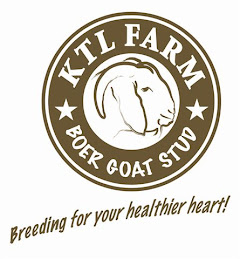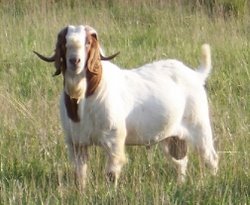 Malaysia underpinning live goat exports
Malaysia underpinning live goat exports Live goat exports for the first nine months of 2007 totalled 62,331 head – up 103% year-on-year and the highest since 2002 (Australian Bureau of Statistics). Record numbers to Malaysia have underpinned shipments this year.
Strong demand for Australian goats from Malaysia has provided the impetus for the increased shipments during 2007. Exports to Malaysia for the first nine months of 2007 stood at a record 47,497 head, with very large shipments recorded during May (7,642 head), August (9,859 head) and September (6,663 head).
With another three months of shipments still remaining for the year, 2007 should see a new calendar year record set, surpassing the 52,755 head recorded in 2002. While Malaysia has dominated exports during 2007, taking 74% of total shipments, numbers to other markets have been inconsistent.
Indonesia remains the second largest destination for Australian goats in 2007, with 5,928 head, despite only taking shipments in May and June. Significant shipments throughout 2007 have also been sent to Thailand (2,300 head), Oman (1,874 head), Singapore (1,192 head), New Zealand (1,144 head) and Brunei (1,000 head).
The largest number of goats exported live during 2007 have been sourced from NSW (21,959 head), followed by SA (14,703 head), Queensland (9,515 head) and WA (9,219 head).
*******************************************************************
Live export to Malaysia – know your obligations
The Malaysian market has led the recovery in Australian live goat exports over recent years and last year accounted for more than 77% of total live goat exports or about 69,500 of 89,000 goats exported. The majority of these goats are destined for slaughter however an increased proportion of exports are high value breeding stock.
The quantity of breeding animals required as well as increased demand for slaughter goats has resulted in good prices for appropriate goats in Australia and unprecedented interest by producers and exporters in the live goat trade. While this is to be encouraged, several important factors must be considered before committing to the trade as an exporter or producer.
Producer requirements
Australian producers have an important role to play in the presentation of animals for live export and this necessitates careful long-term planning.
Producers intending to supply the Malaysian market should be familiar with the various on-farm requirements covered in the Malaysian protocols and in the Australian Standards for the Export of Livestock*. They should also be aware of the requirements placed upon exporters and work with the exporter to meet these requirements. Several of these requirements are outlined below.
Exporter requirements
Goats can only be exported to Malaysia by export operators licensed with the Australian Quarantine and Inspection Service (AQIS). Producers can apply for a licence however this should not be undertaken lightly as the industry is tightly regulated. Most producers choose to work with an exporter who specialises in supplying goats to Malaysia.
Licensed live exporters are required to satisfy the conditions of the Australian Standards for the Export of Livestock* and meet Malaysia’s protocol requirements, as well as those of the importing customer.
Other issues that must be considered and carefully planned for before exporting goats to Malaysia or any other market are:
- The availability of registered quarantine facilities;
- The transport of the goats from the farm to the quarantine facility to ensure they arrive in optimal condition; and
- The condition of the goats prior to loading to ensure they are in optimal condition for export.
Even with appropriate planning, producers and exporters need to be aware of several potential pitfalls to supplying the live export trade. These include:
- Differing interpretation of regulations and specifications;
- Exchange rate volatility; and
- Flight or air transport delays.
The live goat trade plays an important role in underpinning livestock prices in the broader goat industry and was worth more than $11 million in 2007. The strict observance of regulations, such as those contained within the Australian Standards for the Export of Livestock*, will help ensure the maintenance of world’s best practices and a bright future for the industry.

